The December ’70 Trail
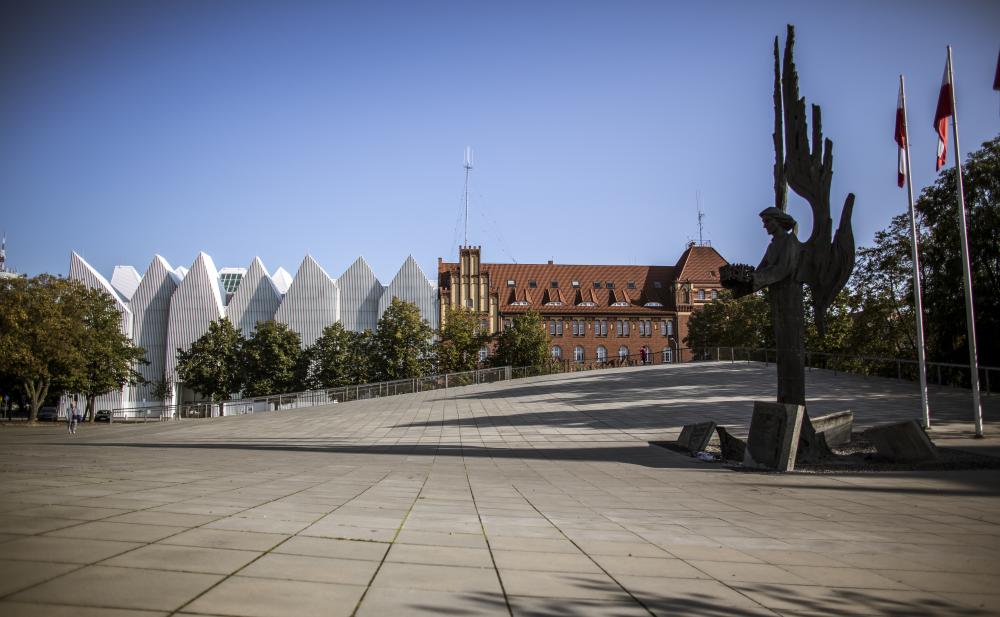
The history of Szczecin abounds with turbulent events. One of the most tragic episodes occurred in December 1970, when the then authorities used force against protesting workers. Shots were fired, blood was shed, people were killed.
In December 1970 a series of protests was initiated by workers as a response to the rising prices of food, in particular of meat. The most dramatic events took place in the northern Baltic coastal cities – Gdynia, Gdańsk, Elbląg and Szczecin.
To commemorate the 45th anniversary of the riots in our city, a tourist trail “The December ’70” has been established. It consists of 9 commemorative plaques in places where the dramatic events happened. The plaques display historical pictures, information in three languages and QR codes that will allow access to detailed descriptions of the places on the web.
The trail came into existence in order to make people, both residents of Szczecin and those visiting our city, and also those not necessarily interested in history, aware that all these streets and squares in Szczecin, seemingly with ordinary buildings, inconspicuous and devoid of historical appearance, were the scene of events of crucial significance for Poland, Europe and the world. It is impossible to understand Szczecin or the phenomenon of “Solidarność” - a social movement that involved millions of people - or the political breakthrough of 1988/1989 which led to the collapse of communism in Europe, without knowing this difficult aspect of history of Szczecin.
The trail is there to remind us and our guests, especially the young ones, whose parents and grandparents participated in the events, but for whom personally it might seem rather a historical abstraction, that the path leading to the freedom we enjoy in our times was purchased at great cost. That the path leading to the Polish Roundtable talks, but also to the fall of the Berlin Wall, was through the blood-stained streets of Szczecin and the common room in the no-longer-operating shipyard.
Places:
1. The Main Gate to the Szczecin Shipyard (A. Antosiewicza Street 1)
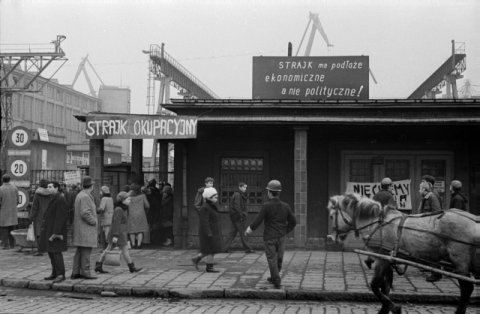
This is where it all began. On 17 December 1970 at around 10:30 a.m., the workers' march set out from the Shipyard gate. After being attacked by the militia, the workers reached the Communist Party's building. Following a series of demonstrations and street clashes (resulting in several deaths and injuries), along with burning down the Party headquarters, decisions on undertaking occupation strikes were made on 18 December 1970 and 22 January 1971, eventually leading to the establishing of a self-organisation centre of the rebel society
2. Dubois/Sławomira Streets
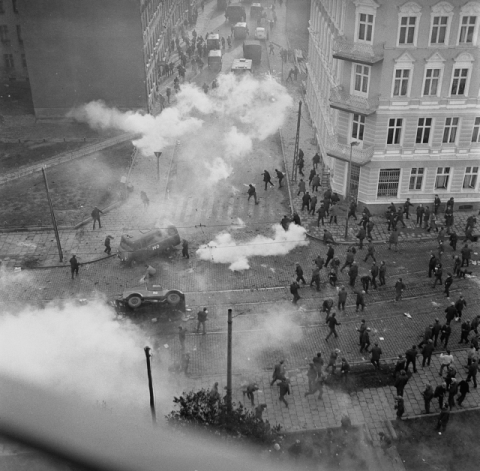
On 17 December 1970, at around midday, the militiamen standing across Dubois Street sought to stop and disperse the workers marching from the Shipyard towards the Communist Party headquarters. As a result of a brutal clash with the demonstrators, supported by local residents, the blockade was overcome. The militia’s vehicle with a tear-gas launcher was captured and set on fire. This image often accompanies the story of Szczecin December 1970.
3. The Voivodeship Committee of the Polish United Workers' Party (Żołnierza Polskiego Square 16)
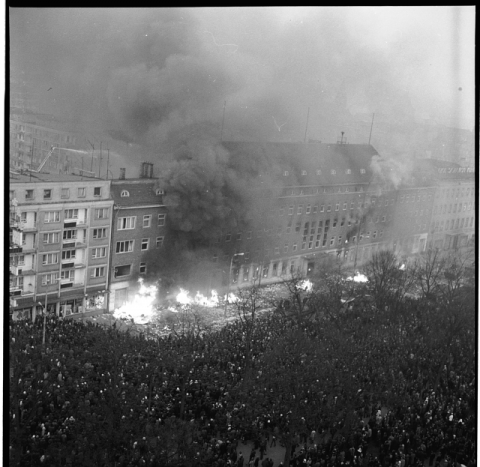
As one of the December songs tells us, "The Fat Man's Palace" was the symbol of the ruling Party. This was where the Szczecin workers came directly from their factories, on 17 December 1970, hoping for fair negotiations and agreements. Instead, they met with indifference that sparked their anger. During the demonstration, participated in by more than a dozen thousand people, the Committee building was set in fire. The army gathered in front of it did not intervene.
4. The Voivodeship Headquarters of the Civic Militia (Małopolska 47 / Małopolska 15 Street)
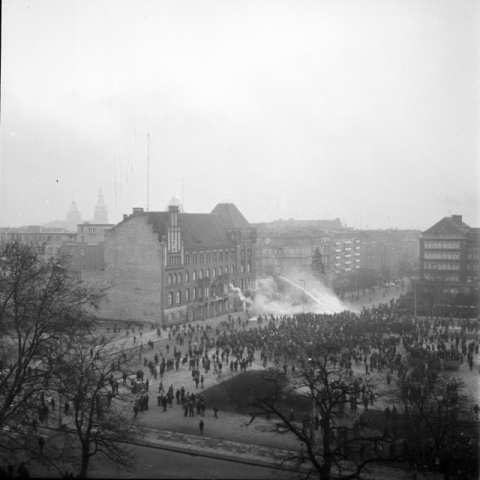
On 17 December 1970, after 3:00 p.m., following an unsuccessful attempt at dispersing the demonstrators gathered in front of the Communist Party headquarters (at 16 Żołnierza Polskiego Square), a large number of demonstrators (around 10,000 people), pursuing the militiamen, attacked the Voivodeship Headquarters of the Civic Militia. The building, which also housed the Voivodeship Control Headquarters, and provided shelter to some of the Party authorities, was attacked with stones and petrol-filled bottles, and set on fire. In the attempt to seize the building, twelve people died and several hundred were injured.
5. The Presidium of the Municipal Supervisory Board (Armii Krajowej Square)
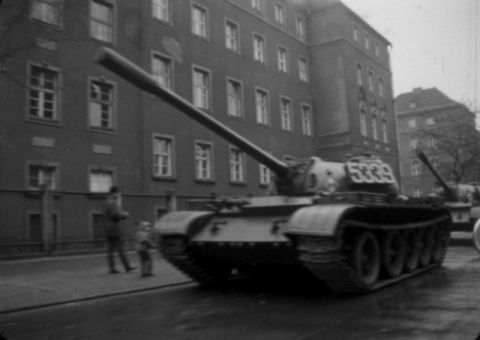
On the evening of 17 December 1970, during street demonstrations and battles, the headquarters of the municipal authorities was also attacked by a crowd of rebellious residents. Part of the building was set on fire, hand-to-hand fighting broke out, and firearms were used. In consequence, several people were injured. The revolutionary crowd was dispersed at around 8:00 p.m., but the night was far from calm, and the city was placed under emergency rule.
6. The Custody Suite / the Public Prosecutor's Office (Kaszubska / Stoisława Streets)
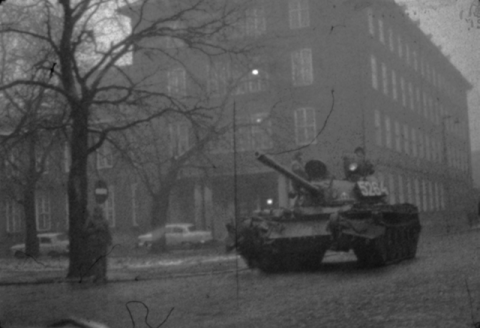
On 17 December 1970, at around 4:00 p.m., some of the street demonstration participants moved from the Party and militia headquarters towards the Voivodeship Custody Suite, the Voivodeship Public Prosecutor's Office and the army barracks located nearby. A fire was started at the door to the Public Prosecutor's Office, but the attack was forced back using standpipe water and tear gas. As the soldiers fired their guns, several people got injured. According to some witnesses, this was when Zbigniew Semczyszyn, a 23-year-old worker, lost his life.
7. The Central Cemetery
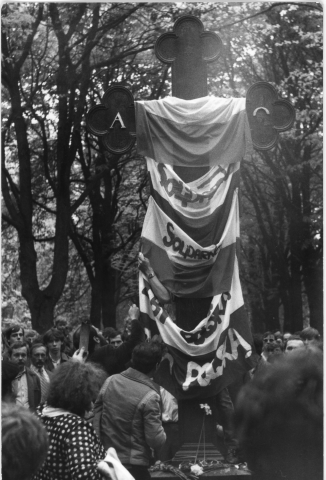
This is one of the remembrance places of the December 1970 revolt. It comprises 13 graves of those who were killed on 17-19 December 1970 and buried in a disgraceful way – at night, in a hurry and many without the presence of their closest relatives. The area around an old German iron cross, standing at the second gate near the victims' graves, was the venue of several demonstrations held during and after the martial-law period. The December '70 Cross, also referred to as the Polish Martyrdom Cross, was erected in 1999. These two structures remind us of the events which were sought to be erased from memory by the censorship and hostile propaganda.
8. The Adolf Warski Szczecin Shipyard Common Room
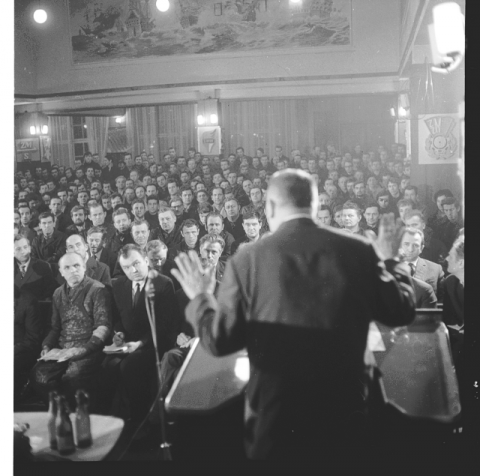
The venue of gatherings, deliberations and conferences became the base of the strike authorities in December 1970 and January 1971. The common room, located at the heart of the Shipyard, also formed the arena of an unprecedented debate between the rebellious workers and top executives of both the Party and the State. A nine-hour meeting with Edward Gierek, the new First Secretary of the Communist Party, held on 24-25 January 1971, put an end to the strike period and opened a new stage in the post-war history of Poland.
9. Wyzwolenia Avenue
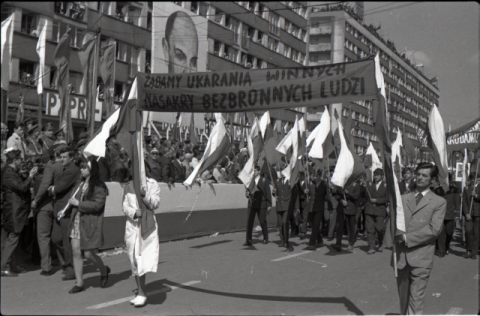
"The Black March" was meant as a protest against the passive attitude of the authorities that seemed reluctant to punish those who were responsible for the December tragedy. On 1 May 1971, a group of shipyard workers decided to join the official parade, disturbing the cheerful Communist celebration. The march came to a head when a brother of one of the 17 December 1970 victims stood in front of the ceremonial parade stand and raised his fist, which was clad in a black glove.
